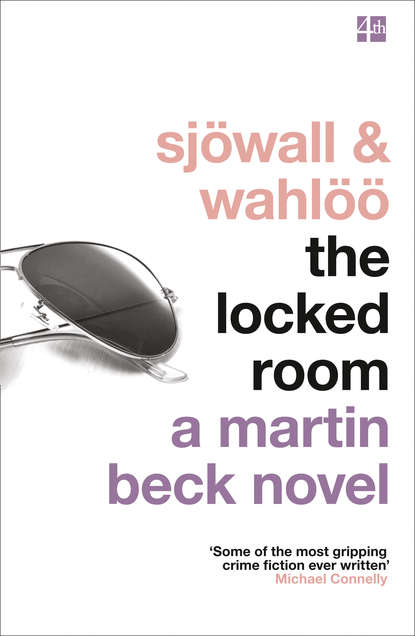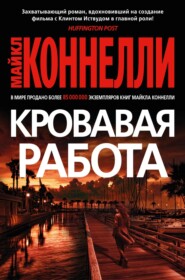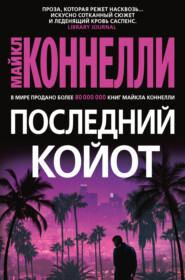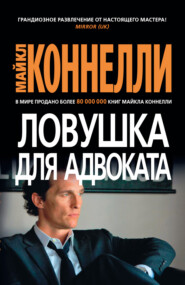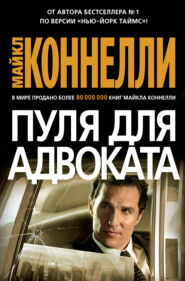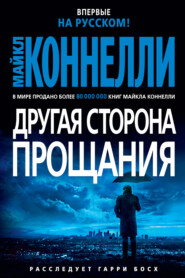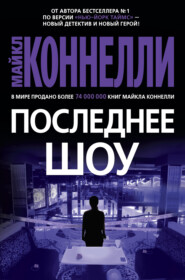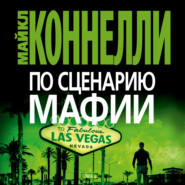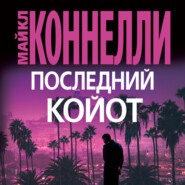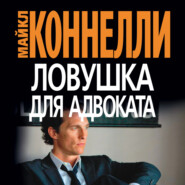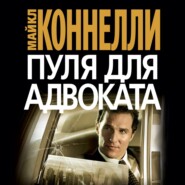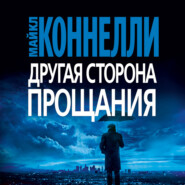По всем вопросам обращайтесь на: info@litportal.ru
(©) 2003-2024.
✖
The Locked Room
Автор
Год написания книги
2019
Настройки чтения
Размер шрифта
Высота строк
Поля
At 2.55 she walked over to the pedestrian crossing at the crossroads. Four minutes later she was standing outside the door of the bank.
Before pushing it open, she lifted the flap of her bag. Walking in, she let her gaze sweep over the office, a branch of one of Sweden's major banks. It was long and narrow; the front wall consisted of the door and the only window. To her right a counter ran all the way from the window to the short wall at the other end, and on her left four desks were fixed to the long wall. Beyond them were a low, round table and two stools upholstered in red-chequered material. Furthest away were some stairs, rather steep, disappearing below to what presumably was the bank's safe-deposit vault.
Only one customer had come in before her – a man. He was standing at the counter, stuffing banknotes and documents into his briefcase. Behind the counter two female cashiers were sitting. Further away a male cashier stood leafing through a card index.
Going up to one of the desks, she fished out a pen from the outer pocket of her bag, meanwhile watching out of the corner of her eye as the customer with the briefcase went out through the street door. Taking a deposit slip out of the holder, she began doodling on it. After a little while she saw the male cashier go over to the door and lock it. Then he bent down and flicked the hook holding open the inner door. As it swung closed with a hissing sound, he resumed his place behind the counter.
She took her handkerchief out of her bag. Holding it in her left hand and the deposit slip in her right, as she approached the counter, she pretended to blow her nose.
Then she stuffed the deposit slip into her bag, brought out an empty nylon shopping bag, and laid it on the counter. Clutching her pistol, she pointed it at the female cashier and, holding her handkerchief in front of her mouth, said: ‘This is a hold-up. The gun's loaded and if you make any trouble I'll shoot. Put all the money you've got into this bag.’
The woman behind the counter stared at her and, slowly taking the nylon bag, laid it down in front of her. The other woman stopped combing her hair. Her hands sank slowly. She opened her mouth as if to say something, but couldn't get a sound out. The man, who was still standing behind his desk, gave a violent start.
Instantly she pointed the pistol at him and yelled: ‘Stay where you are! And put your hands where I can see them.’
Impatiently waving the barrel of the pistol at the woman in front of her, who was obviously paralysed with fright, she went on: ‘Hurry up with the money! All of it!’
The cashier began stuffing wads of banknotes into the bag. When she'd finished, she laid it on the counter.
Suddenly the man at the desk said: ‘You'll never get away with this. The police will –’
‘Shut up!’ she screamed.
Then she threw her handkerchief into her open bag and grabbed the nylon shopping bag. It felt nice and heavy. Backing slowly towards the door, she pointed the pistol at each of the bank's employees in turn.
All of a sudden someone came running towards her from the stairway at the far end of the room: a tall, blond man in well-pressed pants and a blue blazer with shiny buttons and a big gold emblem stitched to the breast pocket.
A loud bang filled the room and went on thundering between the walls. As her arm jerked upward to the ceiling she saw the man in the blazer being flung backwards. His shoes were brand new and white, with thick, grooved, red rubber soles. Only as his head hit the stone floor with a horrible dull thud did she realize she'd shot him.
Dropping the pistol into her bag, she stared wild-eyed at the three horror-stricken people behind the counter. Then she rushed for the door. Fumbling with the lock, she had time to think before emerging into the street: ‘Calm now, I must walk perfectly calmly.’ But once out on the pavement, she started half-running towards the crossroads.
She didn't see the people around her – she was only aware of bumping against several of them and of the pistol shot which went on thundering in her ears.
She rounded the corner and started running, the shopping bag in her hand and the heavy satchel bumping against her hip. Jerking open the door of the building where she'd lived as a child, she took the old familiar way out into the courtyard, checked herself, and fell to a walk. Passing straight through the porch of a gazebo she came out into another back yard. She descended the steep stairway into a cellar and sat down on the bottom step.
She tried to cram the nylon bag down on top of the automatic in her shoulder bag, but there wasn't enough room. She took off her hat, glasses, and blonde wig, and stuffed them all into the shoulder bag. Her own hair was dark and short. She stood up, unbuttoned her shirt, took it off, and put that too into the bag. Under her shirt she was wearing a short-sleeved black cotton jumper. Slinging the shoulder bag over her left shoulder, she picked up the nylon shopping bag and went up the stairs to the yard again. She climbed over a couple of walls before at last finding herself in a street at the far end of the block.
Then she entered a small grocery, bought two litres of milk, put the cartons into a large paper bag, and laid her nylon shopping bag on top of them.
After which she walked down to Slussen and took the metro home.
2 (#u3bf999e2-49f3-5162-8699-d15604ac1633)
Gunvald Larsson arrived at the scene of the crime in his own strictly private car. It was a red BMW, which is unusual in Sweden and in many people's eyes far too grand for a detective inspector, especially when he uses it on the job.
This beautiful Friday afternoon he'd just settled down behind the wheel to drive home, when Einar Rönn had come rushing out into the yard of police headquarters and dashed all his plans for a quiet evening at home in Bollmora. Einar Rönn too was a detective inspector in the National Murder Squad and very likely the only friend Gunvald Larsson had; so when he said he was sorry but Gunvald Larsson would have to sacrifice his free evening, he really meant it.
Rönn drove to Hornsgatan in a police car. When he got there, several cars and some people from the South Precinct were already on the spot, and Gunvald Larsson was already inside the bank.
A little group of people had gathered outside the bank, and as Rönn crossed the pavement one of the uniformed constables who stood there glaring at the spectators came up to him and said: ‘I've a couple of witnesses here who said they heard the shot. What shall I do with them?’
‘Hold 'em a moment,’ Rönn said. ‘And try to disperse the others.’
The constable nodded and Rönn went on into the bank.
On the marble floor between the counter and the desks the dead man, his arms flung wide and his left knee bent, lay on his back. One trouser leg had slipped up, baring a chalk-white Orlon sock with a dark blue anchor on it and a deeply sunburned leg covered with gleaming blond hairs. The bullet had hit him right in the face, and blood and brain matter had exuded from the back of his head.
The staff of the bank were sitting together in the far corner of the room, and in front of them Gunvald Larsson half stood, half sat, one thigh across the edge of a desk. He was writing in a notebook while one of the women spoke in a shrill, indignant voice.
Seeing Rönn, Gunvald Larsson held up his right palm at the woman, who immediately broke off in the middle of a sentence. Gunvald Larsson got up, went behind the counter, and, notebook in hand, walked over to Rönn. With a nod at the man on the floor he said:
‘He doesn't look too good. If you stay here I can take the witnesses somewhere, maybe to the old police station on Rosenlundsgatan. Then you can work here undisturbed.’
Rönn nodded. ‘They say it was a girl who did it,’ he said. ‘And she got away with the cash. Did anyone see where she went?’
‘None of the bank staff at any rate,’ Gunvald Larsson said. ‘Apparently there was a guy standing outside who saw a car drive off, but he didn't see the number and wasn't too sure of the make, so that's not much to go on. I'll talk with him later.’
‘And who's this?’ asked Rönn with a curt nod at the dead man.
‘Some idiot wanting to play the hero. He tried to fling himself at the robber, and then of course, in sheer panic, she fired. He was one of the bank's customers and the staff knew him. He'd been in here going through his safe-deposit box and came up the stairway over there, right in the middle of it all.’ Gunvald Larsson consulted his notebook. ‘He was director of a gymnastics institute, and his name was Gårdon. With an “å”’.
‘I guess he thought he was Flash Gordon,’ Rönn said.
Gunvald Larsson threw him a questioning look.
Rönn blushed, and to change the subject said: ‘Well, I expect there are some photos of her in that thing.’ He pointed to the camera fixed beneath the ceiling.
‘If it's properly focused and also has some film in it,’ Gunvald Larsson said sceptically. ‘And if the cashier remembered to press the button.’
Nowadays most Swedish banks are equipped with cameras that shoot when the cashier on duty steps on a button on the floor. This was the only thing the staff had to do in the event of a holdup. With armed bank robberies becoming ever more frequent, banks had issued orders to their staff to hand over any money demanded of them and in general not to do anything to stop robbers or to prevent them getting away that might risk their own lives. This order did not, as one might be led to believe, derive from any humanitarian motives or any consideration for bank personnel. It was the fruit of experience. It is cheaper for banks and insurance companies to allow robbers to get away with their haul than to be obliged to pay out damages and maybe even support the victims' families for the rest of their lives – which can so easily be the case if someone gets injured or killed.
Now the police surgeon arrived, and Rönn went out to his car to fetch the murder kit. He used old-fashioned methods, not infrequently with success. Gunvald Larsson left for the old police station on Rosenlundsgatan, together with the staff of the bank and four other people who had identified themselves as witnesses.
He was lent an interrogation room, where he took off his suede jacket and hung it over the back of a chair before beginning the preliminary examinations. The first three statements given by the bank personnel were as good as identical; the four others diverged widely.
The first of these four witnesses was a forty-two-year-old man who, when the shot had gone off, had been standing in a doorway five yards from the bank. He'd seen a girl in a black hat and sunglasses hurry past, and when, according to his own statement, half a minute later, he'd looked down the street, he'd seen a green passenger car, probably an Opel, pull out from the kerb fifteen yards away. The car had disappeared quickly in the direction of Hornsplan, and he thought he'd seen the girl with the hat in the back seat. He hadn't caught the car's registration number but believed it to be an ‘AB’ plate.
The next witness, a woman, was a boutique owner. When she heard a shot she'd been standing in the open door of her shop, which shared a party wall with the bank. First she thought the sound had come from the pantry inside her boutique. Afraid that the gas stove had exploded, she dashed inside. Finding it hadn't, she returned to the door. Looking down the street, she'd seen a big blue car swing out into the traffic – tyres squealing. At the same instant a woman had come out of the bank and shouted that someone had been shot. She hadn't seen who had been sitting in the car or what its number was, but she thought it looked more or less like a taxi.
The third witness was a thirty-two-year-old metal worker. His account was more circumstantial. He hadn't heard the shot, or at least hadn't been aware of it. When the girl emerged from the bank he'd been walking along the pavement. She was in a hurry, and as she passed had pushed him aside. He hadn't seen her face but guessed her age to be about thirty. She was wearing blue trousers, a shirt, and a hat and was carrying a dark bag. He'd seen her go up to an ‘A’-reg car with two threes on its number plate. The car was a pale beige Renault 16. A thin man, who looked something between twenty and twenty-five, had been sitting at the wheel. He had long, lank, black hair and wore a short-sleeved cotton T-shirt. He was strikingly pale. Another man, who looked a little older, had stood on the pavement and opened the back door for the girl. After closing the door behind her, he sat down beside the driver in the front seat. This man was strongly built, about five foot ten, tall, and had ashen hair – fuzzy and very thick. He had a florid complexion and was dressed in black flares and a black shirt of some shiny material. The car had made a U-turn and disappeared in the direction of Slussen.
After this evidence Gunvald Larsson felt somewhat confused. Before calling in the last witness he carefully read through his notes.
This last witness turned out to be a fifty-year-old watchmaker who'd been sitting in his car right outside the bank, waiting for his wife who was in a shoe shop on the other side of the street. He'd had his window open and had heard the shot, but hadn't reacted since there's always so much noise on a busy street like Hornsgatan. It had been five past three when he'd seen the woman come out of the bank. He'd noticed her because she seemed to be in too much of a hurry to apologize for bumping into an elderly lady, and he'd thought it was typical of Stockholmers to be in such a rush and so unfriendly. He himself came from Södertälje. The woman was dressed in long trousers, and on her head she'd been wearing something reminiscent of a cowboy hat and had had a black shopping bag in her hand. She'd run to the crossroads and disappeared around the corner. No, she hadn't got into any car, nor had she halted on her way, but had gone straight on up to the corner and disappeared.
Gunvald Larsson phoned in the description of the two men in the Renault, got up, gathered his papers, and looked at the clock. Six already.
Presumably he'd done a lot of work in vain. The presence of the various cars had long since been reported by the first officers to arrive on the scene. Besides which none of the witnesses had given a coherent overall picture. Everything had gone to hell, of course. As usual.





